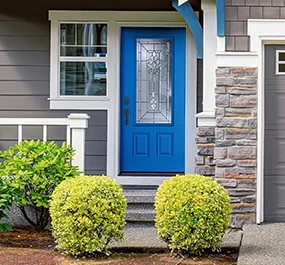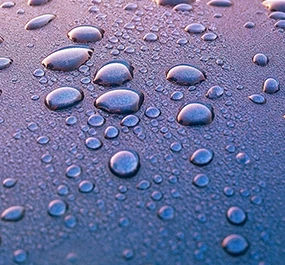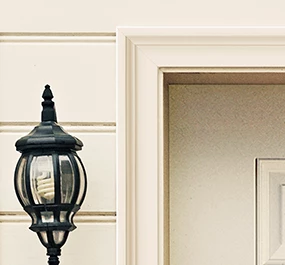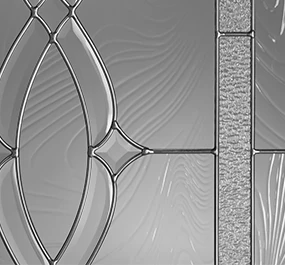Completing home improvement projects with energy efficiency in mind can have a positive impact on your utility costs, but did you know that altering your current abode and building an energy efficient home can also yield favorable results in other areas, too? So what benefits can you gain from having an energy efficient home—and which efficiency-centric projects can help you gain a positive return on investment? Keep reading to find out.
5 Benefits of an Energy Efficient Home
An energy efficient home is one that’s optimized to keep utility consumption low and at-home comfort high. Increasing the energy efficiency of your home can improve a number of different aspects of the home ownership experience, with benefits extending from yourself to the world beyond your property. These are just a few popular examples of the many ways that projects aimed at improving energy efficiency can change things in your life for the better.
A Higher Overall Value
In today’s world, a growing percentage of consumers are taking environmental impact into consideration when it comes time to make purchases. Spenders are doing it no matter their purchase price—it could be as small as a snack or meal or as large as a vehicle or home.
If you ever choose to sell your home, improving your property’s energy efficiency can make it a more attractive option to prospective homeowners willing to spend a little more in the interest of reducing their strain on the world around them. These sorts of consumers are usually able to spend more to achieve this goal, too.
That isn’t to say they wouldn’t stand to gain from the purchase—they’d be reaping the benefits of your improvement projects.
Lower Home Insurance Costs
There are obvious factors that impact the cost of your home insurance, and most are pretty obvious—whether it’s a nearby body of water or the physical footprint of your property, you probably took these more noticeable features into consideration when you pursued insurance quotes. One of the factors you may have left out? Energy efficiency.
If your home boasts energy efficient features like favorable types of doors, windows, electronics and more, you may be able to use those to court deductions to your insurance costs. After your improvement projects, be sure to reach out for another quote. Additionally, check into any tax incentives you may qualify for thanks to your home’s new, more efficient state.
Reduced Utility Costs
A smaller utility bill is likely the most direct change you’ll see from improvement projects focused on energy efficiency. Better equipping your home to handle changes in weather and maintain a consistent temperature can keep you from turning to your home’s temperature control options.
If the decision to make your home more energy efficient is also a conscious decision to make your home greener, too, contact your utility company about its renewable energy options. Switching to renewable sources can both reduce your carbon footprint and lead to lower energy rates—an energy efficient home upgrade project that can be completed with only a phone!
Set a Good Example
By increasing your home’s efficiency and being mindful of how the energy you use impacts the world around you, you’re setting a good example for the younger members of your home. Seeing you put thought into the decisions you make for both yourself and your family will hopefully instill a sense of self-awareness in them, too, teaching them that each decision carries weight and can represent their core values.
They can also feel happy knowing that their impact in the present is low—and maintain good habits to keep it that way in the future.
If the green aspects of energy efficiency aren’t what drew you to the term in the first place, that doesn’t mean it isn’t a worthwhile lesson for the next generation of your family. They’ll learn how to make each decision with purchase, only from a budgetary standpoint as opposed to a moral one. They’ll also learn how to keep costs low and make the correct choices for their first apartment or home.
Improve Your Home’s Ecosystem
Your home is most likely your most lived-in ecosystem, and increasing its energy efficiency also means increasing its air quality. If enhancing your home’s ability to maintain comfortable temperatures decreases the need for temperature correction from air conditioning and heating, it also means less chances for airborne pollutants to enter and circulate through the home, reducing the chance that existing conditions like asthma can be triggered while you relax in your own home.
Reliable energy efficiency can also mean more chances to air out your home during warmer months, allowing for new, fresh air to circulate into your indoor spaces.
How to Make Your Home More Energy Efficient with the Best ROI Upgrades
Reaping the above benefits requires projects that equip your home with what it needs to become energy efficient. This allows a home to operate at the optimal use levels, only consuming available utilities when absolutely necessary. The upfront cost here can be higher than other home improvement projects—that’s the main disadvantage of energy efficient homes—but these endeavors will save you money over time and raise the value of your home.
While this is by no means an exhaustive list of how to make your home more energy efficient, it touches on some of the most popular ways homeowners improve the efficiency of their dwellings.
Before undergoing an improvement project, you may want to consider getting an energy assessment, sometimes called an audit. Some utility companies will perform this at free or reduced cost, but if you’re unable to find an organization to perform one for you, visit the United States Department of Energy website to learn about your other options.
Upgrade Your Entry Door
When it comes to energy self-sabotage, exterior doors can be one of a home’s worst offenders. It all starts with the material your door is made of—wood and steel are popular choices for a reason, and both have their upsides. However, when it comes to choosing the most energy efficient material for your entry door, wood will actually absorb heat away from your home while steel requires costly interior insulation to be sufficiently effective. That’s why fiberglass doors should be at the top of the list.
Fiberglass is weather resistant and doesn’t conduct heat well, so an entry door made with the material will help keep outside elements from having an impact on the indoor ecosystem you’re attempting to establish.
Enhance the benefits of a fiberglass front door by being sure to correctly install the door, utilize weather resistant caulk around the door and apply weatherstripping where necessary. It’s hard to say what makes the most energy efficient home, but fortifying your residence at its exterior door is a necessary step towards that goal.
At Plastpro, we’re committed to creating sustainable products that balance environmental, economic, and social goals. Our fiberglass doors offer a green alternative as they are durable, have a longer lifespan, are energy efficient, and environmentally friendly.
We use proprietary foam core that provides superior insulation, complies with the Environmental Protection Agency’s SNAP 20 regulations, and utilizes sustainable alternatives for foam blowing agents. Additionally, the fiberglass material itself is designed to last for decades, reducing waste and requiring less maintenance than traditional wood doors, making them more cost-effective over time.
Replace Your Windows
Doors and windows are responsible for the large majority of heat lost in a home, so assessing the state of your windows should be your next step towards building an energy efficient home. If you feel a draft when it’s windy or the area around your windows is colder than the rest of your indoor space, they’re probably going to act as a huge detriment when attempting to make your home more energy efficient.
Depending on the number of windows you’ll need to replace, this can be a relatively short project that’ll pay for itself almost instantly or a costly endeavor you’ll have to wait years to see the return on. Either way, replacing outdated windows with weather resistant models like storm windows is almost a necessity if you’re striving for peak efficiency.
Replace Your Electronics and Appliances
While it’s understandable to dread that moment when the refrigerator or washer finally go, they should be replaced before they reach their final, sad moments in service of you and your family.
Each appliance has an average lifespan—when they start to reach the end, they’ll become less efficient and require more energy to get the job done. Planning to replace these big-ticket appliances as opposed to spending when the need arises stops you from near-impulse buying just to replace the broken fridge. You can take time to look for a good price on the appliance that’s right for you, and you can make efficiency a priority while you shop.
As our world becomes more connected, the efficiency of your electronics becomes important, too. Pay attention to the amount of energy your current computer, television, video game systems and other large electronics use. When it comes time to replace them, try to choose a low consumption model and opt for options that have low power modes.
If you aren’t one for large projects, prefer spending money over longer periods of time, already did what you could with your doors and windows, or have an electronics-heavy lifestyle, this is how to make your home more energy efficient.
Increase Your Home Value with Plastpro
That ever-growing group of consumers and home buyers looking for the most environmentally friendly way to spend their money is going to value Earth-conscious decisions around your home. A fiberglass door from Plastpro lasts longer than doors made of wood or metal while retaining more heat. This means less waste and less wasted utilities.
If you don’t plan to sell anytime soon, though, added home value and energy efficiency won’t be the only positives you’ll enjoy with a Plastpro fiberglass door. Fiberglass is sturdier than its counterparts, meaning less time and money spent on maintenance. It’s also adaptable to most doorway sizes, architectural styles and design aesthetics.
Our fiberglass doors are among the most energy-efficient building products available due to the insulation provided by their high density Polyurethane foam core. This insulation helps to reduce energy consumption and building operation costs by sealing out the elements. As a result, our ENERGY STAR Qualified Doors provide homeowners with cost savings on electricity bills, increased comfort and environmental protection.
Meet with a Plastpro dealer to discuss options for your home and lower your utility bills while raising your curb appeal.



